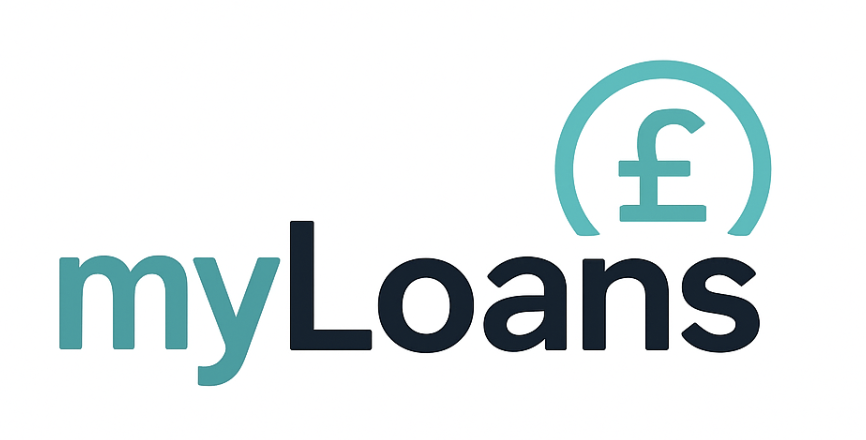Table of Contents
Introduction – Why Use a Personal Loan Calculator?
When you borrow money, it’s vital to know how much it will really cost you. A personal loan calculator gives you this insight in seconds. Instead of guessing or relying on sales material, you can enter your own numbers—such as the loan amount, the interest rate (APR), and the repayment period—and instantly see your monthly repayment and the total cost over the term.
This simple tool is especially useful because loan adverts often show only the representative APR, which not everyone qualifies for. With a calculator, you can test different scenarios based on realistic figures. For example, you can check how much extra interest you’ll pay if you stretch a £10,000 loan over 5 years instead of 3.
As a result, you can:
-
Compare different lenders on a like-for-like basis
-
Spot whether “low monthly payments” actually cost more overall
-
Avoid taking on unaffordable debt
-
Plan ahead for changes in income or expenses
In short, a calculator takes the guesswork out of borrowing and helps you make smarter, more confident financial decisions.
👉 For a complete overview of borrowing options, visit our Personal Loans UK guide.
What Is a Personal Loan Calculator?
A personal loan calculator is a simple online tool that helps you understand the true cost of borrowing. Instead of manually working out interest and repayments, the calculator does the maths for you in seconds.
It works by combining three key details:
-
Loan amount – how much you want to borrow
-
Interest rate (APR) – the annual percentage rate charged by the lender
-
Repayment period – the length of time you plan to repay the loan
Once you enter these figures, the calculator provides two important results:
-
Monthly repayment – the amount you will pay each month until the loan is cleared
-
Total repayment cost – the full amount you will repay over the life of the loan, including interest
Because of this, a calculator lets you see at a glance whether a loan fits your budget. For example, borrowing £10,000 at 7% APR over 5 years might look affordable month to month, but the total cost could be hundreds of pounds higher than repaying the same loan over 3 years.
In short, calculators make it easy to test “what if” scenarios and compare borrowing options before you commit.
Key Inputs You’ll Need
Before you start using a personal loan calculator, it’s worth gathering a few key numbers. These details will make the results accurate and more useful.
Loan Amount
Think carefully about how much you actually need to borrow. Borrowing more than you require might seem tempting, but it also increases the total cost.
-
For example, you might need £5,000 to cover a used car or £15,000 for home improvements.
-
If you’re considering debt consolidation, total up your existing balances first so you enter the right amount.
👉 See our guide on Debt Consolidation with Personal Loans for more detail.
Interest Rate (APR)
The APR (annual percentage rate) shows the true yearly cost of borrowing. It includes both the interest and any compulsory fees.
-
Lenders advertise a representative APR, but not everyone qualifies for it. Your credit score and personal circumstances often determine the rate you’ll be offered.
-
Even a small change in APR makes a big difference. For example, borrowing £10,000 over 5 years at 6% APR means around £193 a month. At 9% APR, the monthly cost jumps to £207, and the total repayment increases by over £800.
Repayment Period
The term of your loan affects both the monthly cost and the total amount repaid.
-
A longer loan (for example, 5 years) will reduce your monthly payments. However, you’ll pay more interest overall.
-
A shorter loan (for example, 3 years) means higher monthly repayments, but you’ll save money on interest.
In other words, longer terms improve affordability in the short term, while shorter terms save you money in the long run.
Fees and Charges
Some lenders add extra costs on top of interest. Always check whether these apply:
-
Arrangement fees – upfront charges for setting up the loan
-
Early repayment fees – penalties if you clear the loan before the agreed term
-
Missed payment fees – charges if you fall behind on repayments
If your calculator allows you to add fees, include them for the most accurate result. Even if fees seem small, they can add up over time.
How to Interpret the Results
After you’ve entered your loan amount, interest rate, and repayment term, the calculator will give you an estimate of your costs. Understanding what these figures mean is the key to using the tool effectively.
Monthly Repayments
This is the amount you’ll need to pay every month until the loan is fully cleared. It combines both the loan capital and the interest charged by the lender.
-
A lower monthly repayment may look attractive, but it usually means you’re spreading the loan over a longer period.
-
For example, repaying £10,000 at 7% APR over 5 years costs about £198 per month.
Because of this, monthly repayments are useful for working out whether a loan fits into your monthly budget.
Total Repayment Cost
This figure shows the true cost of the loan over its full term. It adds up all monthly payments, including interest, to reveal what you’ll pay in total.
-
Using the same example above, borrowing £10,000 at 7% APR over 5 years costs about £11,880 in total.
-
That means you’re paying £1,880 in interest on top of the money borrowed.
Therefore, always check this figure as it gives you the clearest picture of how much the loan really costs.
Comparing Different Scenarios
One of the biggest advantages of a calculator is the ability to test “what if” situations. By adjusting the loan amount or the term, you can see how repayments change instantly.
-
5-year term: Lower monthly cost (£198 per month) but higher total repayment (£11,880)
-
3-year term: Higher monthly cost (£309 per month) but lower total repayment (£11,124)
In other words, longer loans improve short-term affordability, while shorter loans save money overall. This trade-off is something every borrower should consider.
👉 For more tips on comparing lenders, read our guide: How to Compare Unsecured Personal Loans Effectively.
Common Mistakes to Avoid
Although a personal loan calculator is a powerful tool, many people use it incorrectly. Here are the most common mistakes—and how to avoid them.
1. Ignoring Hidden Fees
Some calculators only show interest, not the extra costs. This can make the loan look cheaper than it really is.
-
Arrangement fees – Some lenders charge a fee to set up the loan.
-
Early repayment charges – If you repay the loan before the agreed term, you may face penalties.
-
Late payment fees – Missing even one payment could add extra charges.
👉 Always check the small print on the lender’s website and add these costs to your calculation if possible.
2. Focusing Only on the Monthly Cost
It’s easy to be drawn to the lowest monthly repayment. However, this can be misleading.
-
A £10,000 loan over 5 years may only cost £198 per month, but the total repayment is nearly £11,880.
-
The same loan over 3 years costs more each month (£309), but the total repayment is only £11,124.
Therefore, lower monthly payments don’t always mean a cheaper loan. Look at the total repayment figure as well as affordability.
3. Forgetting Credit Score Impact
The numbers you enter into a calculator are only estimates. In reality, your credit score plays a big role in the rate you’re offered.
-
Lenders advertise a representative APR, but only around 51% of applicants will qualify for it.
-
If your credit history is weaker, you may be offered a higher rate, which increases both your monthly payment and total cost.
👉 To get a clearer picture, use a lender’s eligibility checker or try a pre-approval tool before applying. These use a soft search, so they won’t affect your credit file.
Why Avoiding These Mistakes Matters
By spotting and avoiding these errors, you’ll use calculators more effectively and get results that are much closer to reality. This helps you compare loans fairly, budget with confidence, and avoid unpleasant surprises once you apply.
Why Calculators Help Compare Lenders
Loan calculators are useful when comparing providers like Tesco, M&S, or Halifax.
-
They allow you to see the real repayment figures side by side.
-
They make it easier to judge whether one loan is truly cheaper.
-
They give you confidence before applying, which helps protect your credit score.
👉 To see how Tesco and M&S stack up, check our guide on Tesco vs. M&S Personal Loans.
Case Study: Example Loan Calculation
To see how a personal loan calculator works in practice, let’s walk through a simple example.
Scenario 1 – 5-Year Loan
-
Loan amount: £10,000
-
APR: 7%
-
Term: 5 years (60 months)
The calculator shows:
-
Monthly repayment: about £198
-
Total repayment: about £11,880
-
Total interest paid: about £1,880
At first glance, the monthly repayments look manageable. However, spreading the loan over 5 years means you’re paying more interest in the long run.
Scenario 2 – 3-Year Loan
-
Loan amount: £10,000
-
APR: 7%
-
Term: 3 years (36 months)
The calculator shows:
-
Monthly repayment: about £309
-
Total repayment: about £11,124
-
Total interest paid: about £1,124
In this case, the monthly repayments are higher, but you save around £756 in interest compared to the 5-year option.
What This Means for Borrowers
This example highlights a common trade-off:
-
Longer terms → Lower monthly payments, higher total cost.
-
Shorter terms → Higher monthly payments, lower total cost.
Therefore, the “best” loan depends on your priorities. If you value short-term affordability, a longer term may be useful. If you want to pay less overall, a shorter term is usually the smarter choice.
Alternatives to Using Calculators
While a personal loan calculator is a quick and convenient tool, it isn’t the only way to estimate what a loan will cost. There are a couple of alternatives that can sometimes provide more accurate or personalised results.
Broker Advice
Loan brokers can go beyond a simple calculator by using your actual credit score and financial profile to match you with lenders.
-
A broker often has access to a panel of lenders and can show you side-by-side comparisons.
-
Unlike a generic calculator, broker results are tailored to your real circumstances.
-
For example, if you have a fair credit score, a broker may recommend lenders who specialise in mid-tier rates rather than quoting you headline APRs you are unlikely to qualify for.
As a result, using a broker can save time and reduce the risk of applying to lenders who may reject you.
Pre-Approval Checks
Some banks and lenders now offer pre-approval tools or “soft searches.”
-
These checks let you see the likely rate and monthly repayment without leaving a mark on your credit file.
-
Because they don’t affect your credit score, you can safely shop around between providers.
-
For example, Tesco Bank and M&S Bank both provide eligibility checkers that estimate your APR before you formally apply.
Therefore, pre-approval is one of the best ways to combine the convenience of a calculator with the accuracy of lender-specific results.
When to Use Each Option
-
Use a calculator if you want to quickly model different borrowing scenarios.
-
Speak to a broker if you want tailored recommendations and access to multiple lenders.
-
Try a pre-approval check if you’ve narrowed down your options and want to know the likely rate you’ll be offered.
By combining these methods, you’ll make better borrowing decisions and reduce the risk of unexpected costs.
👉 For further guidance, see our comparison of Tesco vs. M&S Personal Loans to understand how different lenders may treat your application.
FAQs About Personal Loan Calculators
Do personal loan calculators affect my credit score?
No. They are for guidance only and do not involve credit checks.
Are loan calculators accurate?
They give estimates based on the numbers you provide. However, your actual rate may differ depending on your credit profile.
Which UK banks offer loan calculators?
Most major banks, including Tesco, M&S, and NatWest, provide calculators on their websites.
Conclusion – Smarter Borrowing with a Calculator
A personal loan calculator is a simple but powerful tool. It shows you monthly repayments, total costs, and the impact of changing loan terms. By using one before applying, you’ll make a better financial decision.
👉 Next, try our Unsecured Personal Loans UK guide or explore Debt Consolidation with Personal Loans if you want to reduce your monthly outgoings.
Personal Loan Debt Consolidation UK – Is It Right for You?
Juggling multiple credit cards, overdrafts, or loans can be stressful and expensive. A debt consolidation loan allows you to combine everything into a single monthly repayment, often at a lower interest rate. In 2025, UK lenders from high street banks to online...
Emergency Loans UK – How to Borrow Fast in 2025
When an urgent expense hits — like car repairs, medical bills, or a broken boiler — quick access to funds can be essential. In 2025, emergency loans in the UK provide a way to borrow fast, with some lenders offering same-day decisions and payouts. This guide explains...
Top 10 Personal Loan Providers UK 2025 – Rates, Features & Eligibility
The UK personal loan market in 2025 offers more choice than ever, with banks, supermarkets, online lenders, and credit unions all competing for borrowers. The best deal for you depends on your credit score, loan size, and repayment term — but comparing providers side...
Best Debt Consolidation Loans UK 2025 | Top Options
Managing multiple debts can feel overwhelming, especially with credit cards, overdrafts, and personal loans all charging different interest rates. A debt consolidation loan can simplify your finances by rolling everything into one fixed monthly repayment — often at a...
Best Bad Credit Loans UK 2025 – Top Lenders Compared
Having a poor credit score, CCJs, or past defaults doesn’t mean borrowing is out of reach. In 2025, several UK lenders specialise in products designed for people with bad credit — offering smaller loans, flexible repayment terms, and eligibility checks that won’t harm...
Home Repair Loans UK – How to Cover Unexpected Costs in 2025
A leaking roof, broken boiler, or urgent plumbing issue can quickly turn into an expensive problem — often when savings aren’t available. In 2025, home repair loans in the UK provide a way to spread the cost of essential fixes into manageable monthly repayments. This...
Green Energy Loans UK – How to Finance Eco-Friendly Home Improvements in 2025
Eco-friendly upgrades such as solar panels, insulation, heat pumps, and EV chargers can cut energy bills and boost property value — but they require a significant upfront investment. In 2025, green energy loans in the UK provide a way to spread the cost of sustainable...
Moving House Loans UK – How to Cover Relocation Costs in 2025
From deposits and removal vans to solicitor fees and new furniture, moving house in the UK can quickly add up to thousands of pounds. Not everyone has savings set aside to cover these costs upfront. In 2025, moving house loans in the UK provide a way to spread...
Education Loans UK – How to Fund Studies and Professional Courses in 2025
Not all education in the UK is covered by government student finance. Postgraduate degrees, professional qualifications, and private training often require self-funding — with tuition fees and course costs running into thousands of pounds. In 2025, education loans in...
Holiday Loans UK – How to Spread the Cost of Travel in 2025
Holidays can be some of the most rewarding experiences of the year, but they often come with a price tag that’s hard to cover upfront. From flights and hotels to all-inclusive packages and once-in-a-lifetime trips, the costs can add up quickly. In 2025, holiday loans...
Best Personal Loans UK 2025 – Top Lenders Compared
The UK personal loan market in 2025 is more competitive than ever, with high street banks, supermarkets, online lenders, and credit unions all offering products to suit different needs. Choosing the right provider can save you hundreds in interest and ensure...
Medical Loans UK – How to Finance Healthcare Costs in 2025
While the NHS covers most essential treatment, waiting lists, private care, and specialist procedures mean many people face out-of-pocket medical expenses. From dental work and fertility treatment to cosmetic surgery and urgent private healthcare, costs can run into...
Car Loans UK – Personal Loan vs Hire Purchase vs PCP in 2025
Buying a car in 2025 usually means more than just choosing the right vehicle — it also means deciding how to pay for it. In the UK, the three main options are a personal loan, hire purchase (HP), or personal contract purchase (PCP). Each has its own advantages,...
Home Improvement Loans UK – How to Finance Renovations in 2025
Planning a new kitchen, loft conversion, or energy-efficient upgrade can transform your home’s value and comfort — but the upfront costs are often daunting. In 2025, home improvement loans in the UK provide a way to spread renovation expenses into affordable monthly...
Bad Credit Personal Loans UK 2025 | Complete Borrowing Guide
Defaults, CCJs, or missed payments don’t have to shut you out of borrowing. In 2025, UK lenders still offer options for people with less-than-perfect credit — from credit unions and guarantor providers to online specialists. This guide explains how bad credit personal...

















